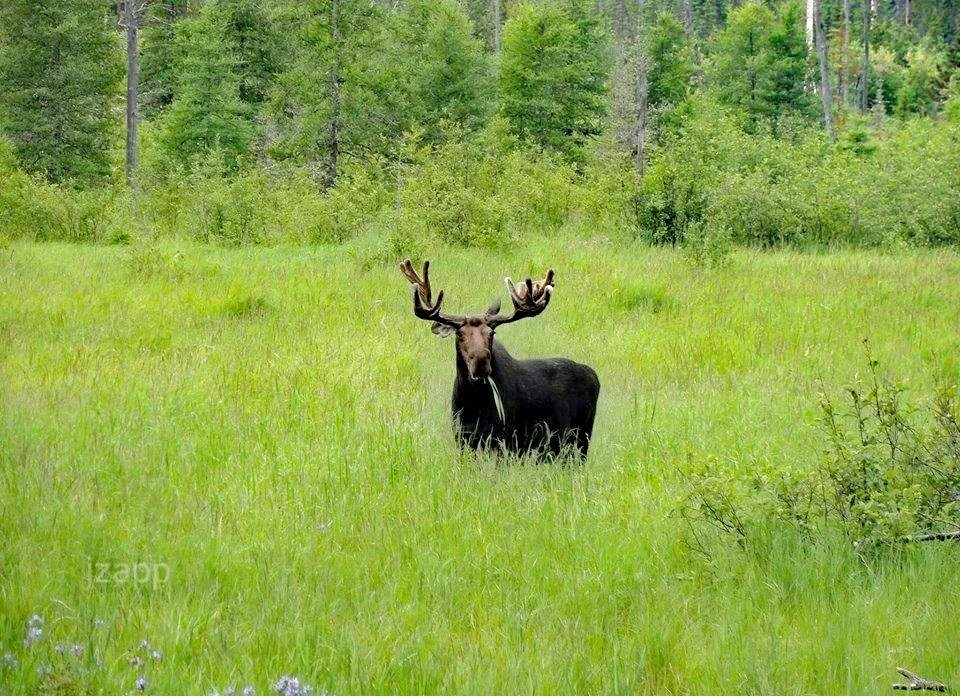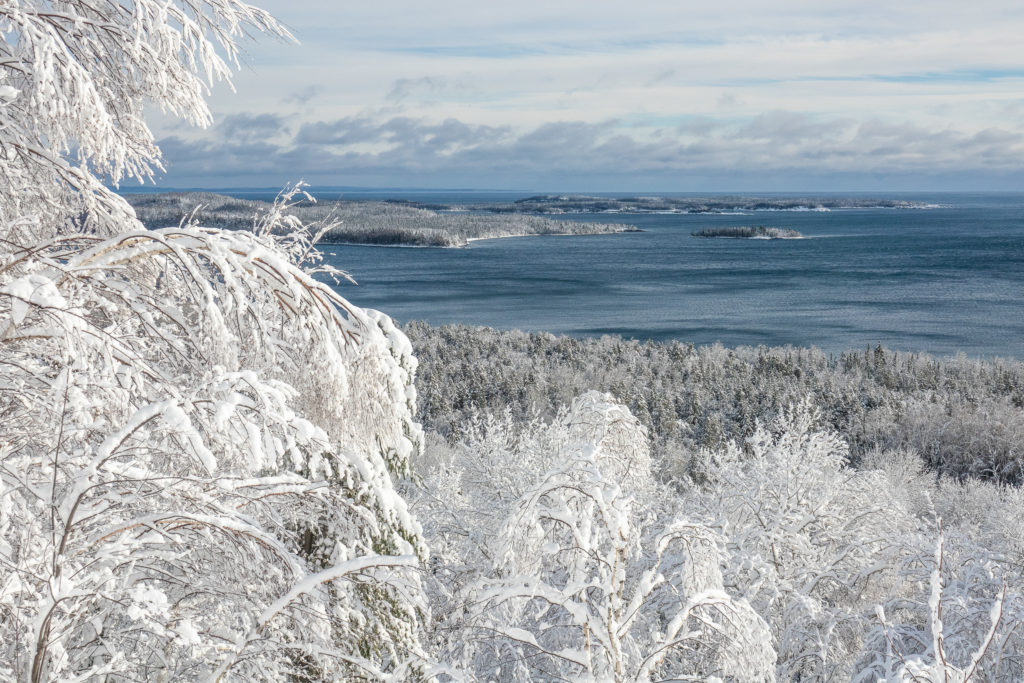Tribal Lands & Resources
The core mission of the Grand Portage Trust Lands Agency is to preserve and protect the natural resources and environment of the Grand portage Indian Reservation and the surrounding 1854 Ceded Territory for the benefit of the tribe today and seven generations from now. The agency embodies the Ojibwe philosophy of seventh generation planning. When making decisions and taking actions today, Ojibwe consider not only the immediate future and outcomes, but also their impact on children seven generations hence. Similar holistic thinking is manifested in the science of ecosystem health, where solutions to the world’s problems are found by addressing the interconnectedness of humans, animals, and their shared environment.
The Grand Portage Natural Resources Management program began in the 1930’s and expanded in 1992 when the Grand Portage Trust Lands agency was created. The Trust Lands Agency is comprised of five departments, Forestry, Biology, Environment, Conservation Enforcement, and Realty and Roads. The overall agency is led by the trust lands administrator who works directly with the Grand Portage Tribal Council to communicate overall priorities. Each department has a director that leads the overall direction and priority setting for its role.
25 Store Road, Grand Portage, Minnesota

The Forestry Department is the original department and was formed in the 1930’s using guidance developed by renowned naturalist Sigurd Olsen (1940), who developed the first forestry management plan for Grand Portage. The forestry department has responsibilities to sustainably manage Grand Portage forests for healthy ecosystem structure and function, wildlife, habitats, and marketable timber. Additionally, the forestry department manages the Wildland Fire Program that addresses wildfire and prescribed burning for the tribe. The department is staffed by 10 permanent and seasonal staff.
The Departments of Biology and Environment were initially formed in 1997 and merged in 2010 and integrated into a single operational unit. These departments conduct fisheries, wildlife, and environmental research supporting sustainable air and water quality, wetlands, fisheries, wildlife populations, and aquaculture. It is comprised of 14 professional staff conducting community-assisted research projects. The Department of Biology and Environment has ongoing partnerships with Minnesota DNR, the U.S. Fish and Wildlife Service, and other tribal, state, federal, and several academic institutions.
The Conservation Law Enforcement Department has a purpose to enforce natural resources management regulations. The department is led by a chief conservation officer and is staffed with an additional conservation law enforcement officer. The core responsibilities are to ensure compliance with the Grand Portage Hunting and Fishing Code (1997). The department has additional responsibilities to deal with nuisance wildlife complaints, snowmobile trail maintenance and trail grooming.
The Roads and Realty Department develops and maintains the roads and real estate of the Grand Portage Reservation. The Department is led by a Roads and Realty Director. The core functions of the department are to ensure that the Grand Portage Land Planning Ordinance are followed, and applicable federal and tribal real estate laws and practices are used for effective land planning and development.

Guiding Principles and climate adaptation
In 2008, under the auspices of the Grand Portage Reservation Tribal Council, the Grand Portage Trust Lands office formed a global climate change working group to quantify the effects of climate change on natural resource management. Guided by Grand Portage Band’s basic principles, this group produced one of the first tribal climate vulnerability assessments and strategic plans to adapt to climate change. The document is an overall guide for operations of the trust lands agency. It is structured to meet the two resource priorities below.
1) Protection of Existing Resources
The continued longevity of Ojibwe culture and tradition depends on identification and protection of regional resources. Present-day realities threaten the livelihood of regional resources as well as the longevity of Ojibwe culture. We will endeavor to identify regional resources integral to support Ojibwe tradition, culture and way of life. This identification project will take inventory of the existing resources in the region, including land, the lakes, waterways and watershed, as well as the existing wildlife and plant populations. The inventory stage of this project will accumulate data on these populations and regions, enabling us to establish priorities for their regeneration and management. Our analysis will incorporate considerations of the resources’ value as well to Ojibwe culture and tradition and their projected sustainability in the anticipated altered climate in the future. This analysis will prioritize resources as low- to high-value based on their value to Ojibwe culture and their likelihood of thriving in a changing climate.
2) Use Scientific Principles of Environmental Management
To complement our understanding of Ojibwe worldview, we will base our restoration projects on the basis of sound science, incorporating tools and protocols established and accepted by the scientific community. These on-going assessments of current science will enable us to implement best practices in the restoration and protection of high-value resources, such as plant and animal populations and regional environments whose future existence depends on adapting to a changing climate and environment.
These are the basic tenets that guide the operations of the trust lands agency in its constant efforts to exhibit leadership in tribal natural resources management and research.